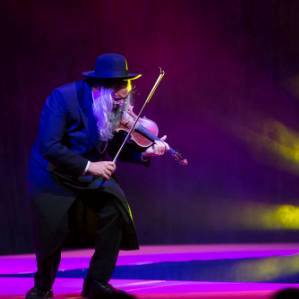Lifestyle/Community
The X Games of a new halachic generation
It may have started with the Sinai Indaba, but how does one replicate, package, universalise and roll-out such a South African concept to the world? Arise Sinai X!

HOWARD SACKSTEIN
The X in the newly re-branded Sinai X learning festival portended a clue.
X has traditionally been associated with Generation X, those people born during the peak of the Cold War, a generation with short attentions spans searching for quick meaning in the post-drug crazed years of the 1960s.
The letter X is also closely linked to the X Games, the extreme sport Olympics owned by the American TV station ESPN that covers death-defying exhibition sports such as snowboarding, motocross and skateboarding.
There was little doubt that Sinai X 2016 would be different.
And it began with a lone fiddler dressed in a charedi black coat and flying tzitzit duelling himself on the strings.
Although first envisioned in a science fiction movie, the idea of a silent disco found its home in the picturesque seaside resort of Palolem in South Goa, India. Revellers, tripping on drugs, would dance the night away to thumping beats in the forests next to the beach, making the village almost uninhabitable to locals.
And so the idea of a silent disco was born. Wearing wireless headsets, tourists could dance through the night without disturbing anyone and without the thudding sounds of electronic music pulsating through the air.
By 2015, technology had advanced to such an extent that multichannel wireless headsets were commonly available. Each reveller could select their preferred genre of music and dance silently to their beats of choice. How awkward to watch a group of people – some listening to deep house, others to trance and some to hip-hop – all dancing together in complete silence in an Indian forest.
The silent disco craze hit South Africa in the beginning of 2016 in a big way. Weddings with silent discos in the forests and secret sunrises are now common place in Johannesburg and Cape Town, where those awake at the unholy hours of the morning can don wireless headsets and, communally, dance or practise yoga to the rising sun.
Where there is innovation, there is often Chief Rabbi Warren Goldstein. It was Goldstein, the driving force behind the CAP project, the Sinai Indaba and The Shabbos Project, that would bring the idea of wireless headsets into the mainstream of communal Jewish conferencing.
Sinai X boasted an array of live speakers presenting from the stage as well as pre-recorded, ‘fast food’, 10-minute talks on an array of topics. Each participant selected their preferred shiur via the channel selector on their wireless headsets, thus alleviating the need to change rooms to follow different streams or topics.
A 10-minute shiur is the perfect pre-packaged time for the ADHD Generation X and their even less focused Generation Y offspring; one big idea delivered in an intense, well thought-out way, in a to-the-point drosha.
And so it is not often that one uses the words “religion” and “innovation” in the same sentence but the Chief Rabbi’s Sinai X once again proved itself to be on the cutting edge of innovation.